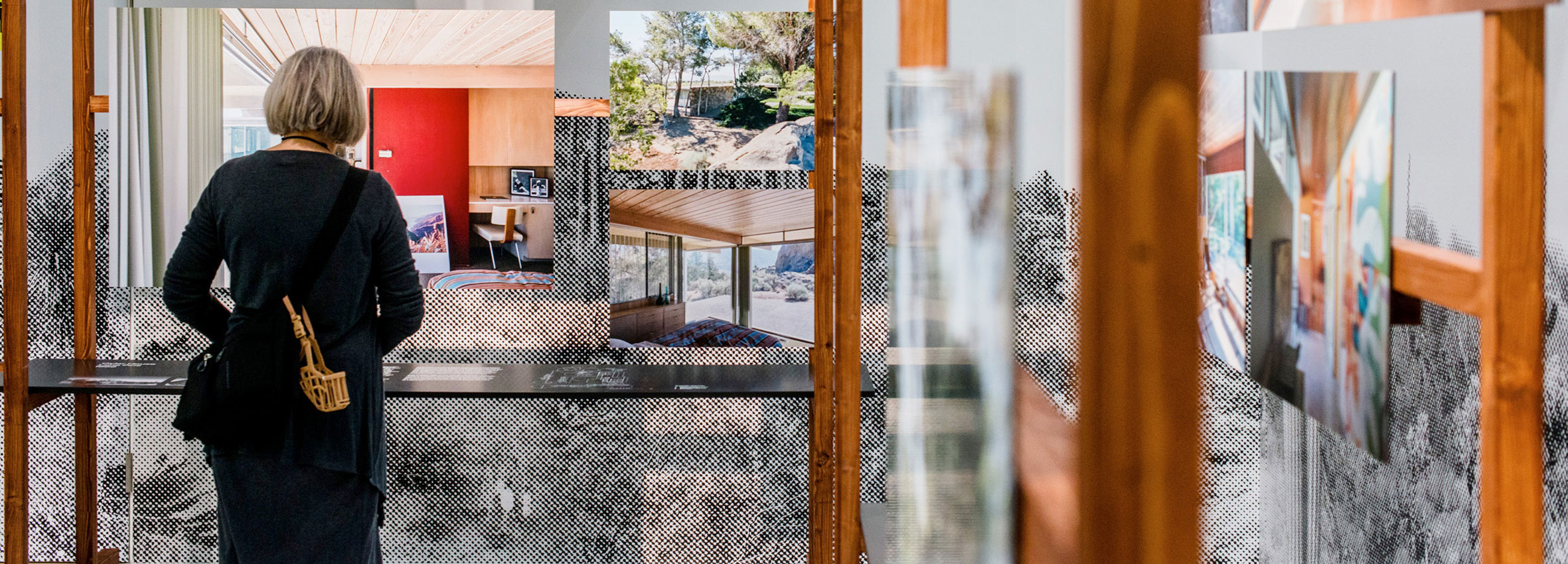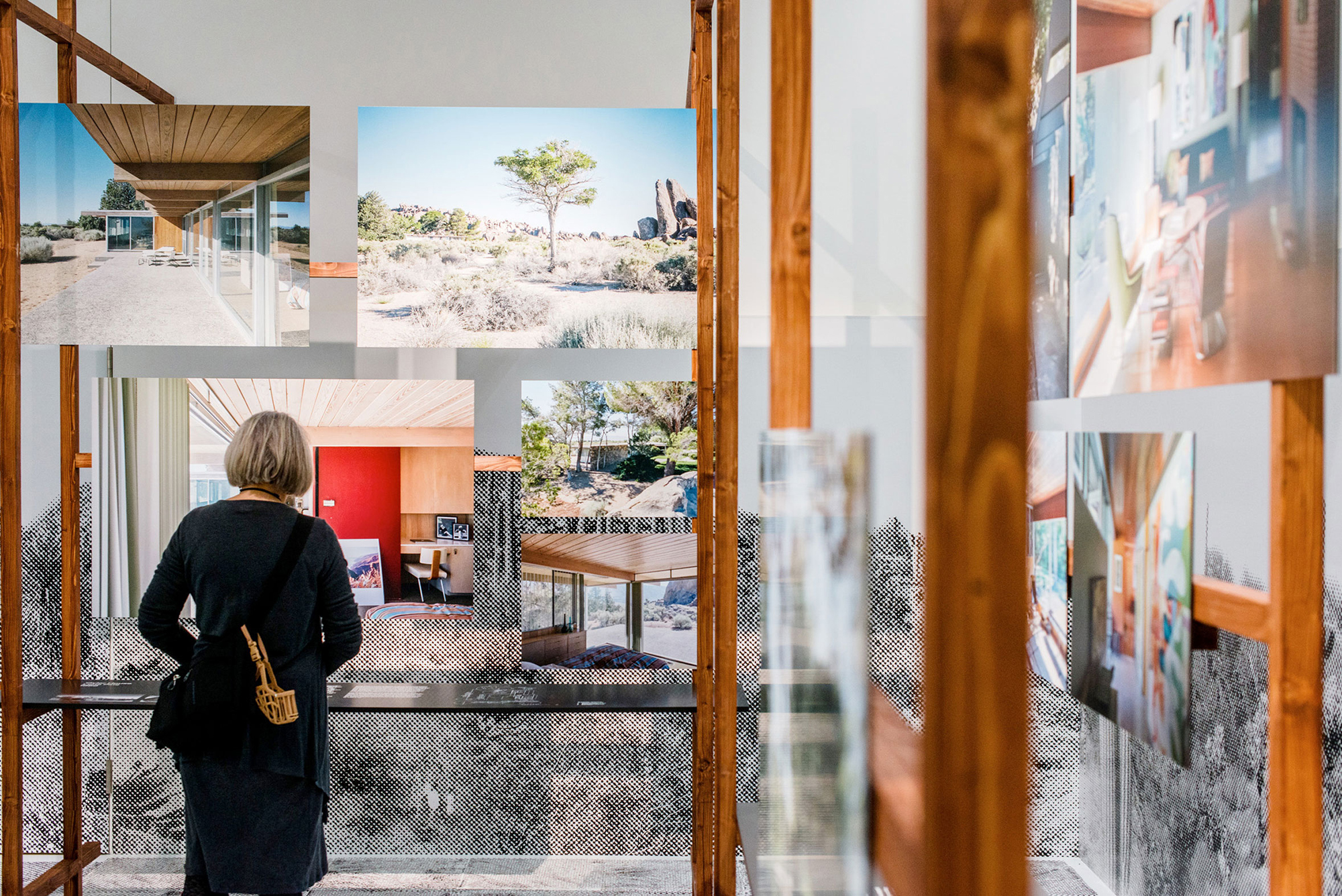Richard Neutra Exhibition in Vienna

Richard Neutra (1892-1970) is presumably Austria’s most successful architectural export of the twentieth century. However, the fact that Neutra was born in Vienna is often forgotten in the face of his later career. And although Neutra himself admitted that he had decided to become an architect when he was only eight years old, this professional aim was certainly not formed in the family sphere. “In my circle, there was no desire for ‘a breath of fresh air.’ […] Narrow-mindedness, joylessness and daily vapidity were my earliest and best guides into any new surroundings I could long for”, Neutra wrote in his autobiography in 1962.
Neutra’s career and relationship to his homeland, which alternated between longing and frustration, is one of the narrative threads taken up by the current exhibition at the Wien Museum. The others are represented by the houses on the outskirts of Los Angeles which made Neutra a key figure of California Modernism. The show offers little content-related or spatial connection between the two stories. The biographical material - primarily reproductions of photos, drawings and writings - is spread out on yellow tables, while the houses can be viewed in large-format architectural photos by David Schreyer on open wooden frames along the walls of the hall. Of the 169 structures created by Neutra just in and around Los Angeles, nine are presented here and shown on a floor-to-ceiling figure-ground diagram of the Californian metropolis.
The photos clearly convey the proximity to nature that Neutra strove to create with his architecture - and that now contributes to the fact that his houses, originally planned for clients from the middle class, have become luxury properties. Dramatic increases in property values, which arouse the desires of investors, frequently lead to the homes being threatened with demolition. In this case, the houses shown in the exhibition are an exception: they have found art-minded new owners who have been willing to tell curator Andreas Nierhaus about their relationships with their homes. The texts accompanying the architectural photographs provide just as much information about the residents and use of the houses as they do about their architecture.
The exhibition also offers illuminating insight into Neutra’s life and work. Visitors learn about Neutra’s sheltered childhood as the son of a foundry owner, his military service in Bosnia-Herzegovina, his early enthusiasm for the USA, which was inspired by Adolf Loos, and his first meeting with Frank Lloyd Wright, in whose honour Neutra had his son baptized Frank Lloyd. The Wien Museum devotes quite a lot of space to Neutra’s work in journalism and how the media received his projects. As early as the mid-1920s, Neutra wrote several books that brought his Austrian compatriots closer to the architecture, urban planning and civil engineering of his adopted homeland. After the Second World War, he produced a number of monographs as well as writings on architectural theory. In 1949, he was one of very few architects to grace the cover of Time magazine. The response to Neutra’s work was less flattering in Austria, where he tried in vain to win contracts in the 1960s. Indeed, the architecture establishment in that country saw the émigré, by that time world-renowned, as unwanted competition and a troublemaker. Ultimately, Neutra was to leave just one house in Austria - a modest, single-storey residence built in Vienna’s Werkbund district in 1930.
Of course, a compact exhibition like the one in Vienna will have gaps: visitors learn little about Neutra’s working practices, his collaborations with other architects, particularly with his son and partner Dion. Neutra’s European projects, which are located primarily in Switzerland and Germany, have been completely omitted. Instead, Nierhaus presents Neutra as a lone warrior and great innovator who had soon become alienated from his home country and only later - too late and in vain - attempted to find a connection and contracts.
As of 29 May, the must-see exhibition will again be open to the public.
The following publication will accompany the exhibition: David Schreyer, Andreas Nierhaus. Los Angeles Modernism Revisited. Houses by Neutra, Schindler, Ain and Contemporaries. Zurich: Park Books, 2019.

